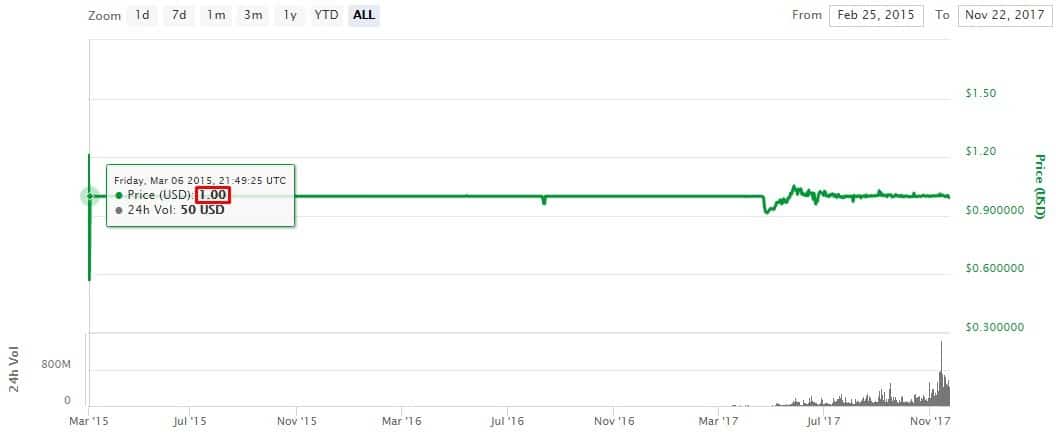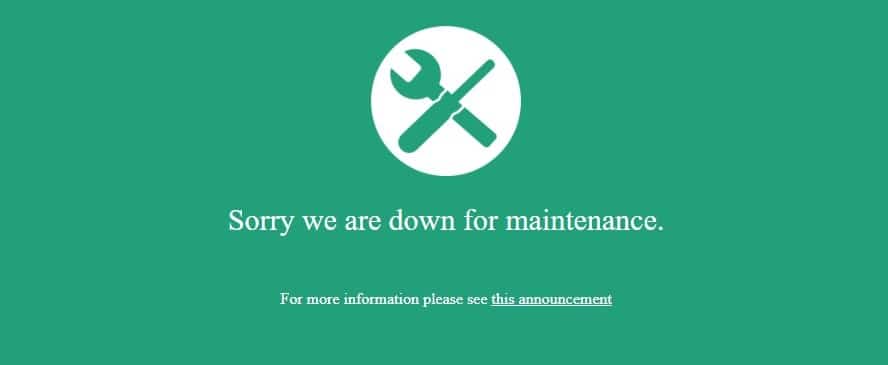Tether Explained
Last Updated: 1st November 2018
Given the recent speculation that has surrounded Tether, I thought it would be appropriate to take a detailed look at what exactly Tether is, and why it has become so integrated in the cryptocurrency eco-system. It has become very common place for people to talk about the token without fully understanding it. This article will help you to develop a comprehensive understanding of Tether, so you can make better informed investment decisions given the recent controversy that has engulfed it.
What is Tether
Issued on the Bitcoin blockchain via the Omni Layer Protocol, A Tether (USDT) is an asset backed token that is intended to serve as a gateway between fiat and cryptocurrencies. Each Tether has a value equivalent to that of a single US Dollar, i.e. the Tether is pegged to the USD. In-order to ensure that the value of a single Tether is always the same as the value of a single US Dollar, for every Tether that is issued, an asset of an equivalent value must be held by Tether Limited. Tether Limited being, the government registered company that is responsible for the issuance of Tethers. Tethers can be purchased and redeemed via Tether Limited. An important point to note: Each Tether issued is represented as a liability for Tether Limited.

Source: Coinmarketcap
As can be seen from the graph, the price of a single Tether is always trading at roughly around $1.00. As previously mentioned, this is done to by ensuring an equivalent value of assets are held in reserve for each Tether issued.
Use Case of Tether
The use of case of Tether is as a gateway between fiat and cryptocurrencies. Users typically purchase USDT (Tether) with their fiat, which is then used to buy a cryptocurrency of their choice.
An advantage of Tether is that for new users, it becomes much more straightforward to transact. Depending on which exchange you use, it can often be a timely and frustrating experience when trying to send fiat to trade with. If you want to buy an altcoin, users are often required to first purchase a more well known cryptocurrency, such as Bitcoin or Ethereum, and then send that to another exchange in-order to buy the altcoin. If an exchange supports Tether, this process is simplified because you can often just buy the altcoin immediately depending on the trading pair.
However, these advantages offered by Tether are not enough to detract from some of its issues. One such issue Tether faces, is one of transparency.
Transparency
In-order for Tether to be taken seriously as a gateway between fiat and cryptocurrencies, it must demonstrate that each Tether being issued is actually backed up by an asset. In-order to prove this to its users and the public, Tether employs what is known as: Proof of Reserves.
At the time of writing this article (one day after the Tether Hack), I would have liked to display the transparency page that Tether Limited uses to show that each Tether issued is asset-backed. However, when I try to access the page, this is what I get:

Instead, a slightly older, but still interesting Proof of Reserve page will have to do:
Source: Tether.to
As I mentioned previously, the amount of Tether issued counts as a liability to Tether Limited. Therefore, in-order to counteract the liability that Tether Limited takes on by issuing Tethers, it MUST purchase an asset of an equivalent value.
The key value here is shareholder equity. Shareholder equity simply represents the value of a company, i.e. the amount of money that would be left if all assets were liquidated and debts repaid. For those of you who are more mathematically minded:
Shareholder equity = Total Assets – Total Liabilities
In an ideal world, shareholder equity should NEVER be negative. If shareholder equity is negative, this means that “Total Liabilities” is greater than “Total Assets”. If “Total Liabilities” is greater than “Total Assets”, that means Tether Limited has issued MORE Tethers than it has in assets sitting in reserves. Negative shareholder equity has one immediate problem: In the highly unlikely scenario that every Tether holder wanted to redeem their Tether for fiat, Tether Limited technically would not be able to redeem everyone’s tokens. This results in some very unhappy Tether holders.
Like I previously mentioned, this is an older (but still accurate) transparency page from the Tether website. The idea that a company which claims that each Tether issued will always be backed one-to-one, which is in fact not the case, is a slightly uncomfortable one. It is uncomfortable because of the large degree of trust that is needed in-order to believe Tether Limited will do what they say they will. It certainly goes against the principle on which this whole cryptocurrency space seems to be built upon. The principle of decentralization and the elimination of the need to trust anyone or anything.
Conclusion
It would be wrong of me not the comment on the recent controversy that has been surrounding Tether, and to some extent, Bitfinex. If you are unaware of the issues that have been plaguing these two companies, then I strongly recommend you read this article by Bitfinex’ed, who seems to have become an authority on the subject.
The issue that currently surrounds these two companies is one of a lack of transparency. A lack of transparency surrounding their financial stability, but more importantly, their solvency. Bitfinex and Tether are so integrated into the cryptocurrency eco-system, that any major issues concerning these two titans would reverberate throughout the whole cryptocurrency space. So understandably, the community would like some impartial and independent answers.
While the team here at Mycryptopedia do not entertain conspiracy theories, we are nonetheless stakeholders in this burgeoning space, and so too, would like some impartial and independent answers.


